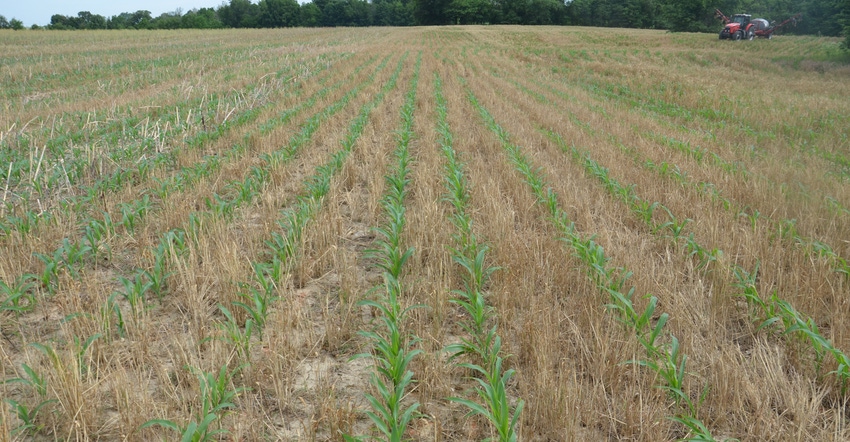April 27, 2022

Nutrient cycling can be a major benefit of cover crops. Understanding it is essential as you take credit for nutrients from cover crop residues.
What is nutrient cycling? At its most basic, it’s the decomposition of plant biomass after it dies. Decomposition is a biological process — don’t let anyone convince you otherwise. Decomposing organisms start to consume plant materials and assimilate nutrients from plant biomass into themselves. Spiders and other macrofauna play a role by shredding plant residues into smaller pieces, making them easier for decomposing fungi and bacteria to consume.
What exactly is the fate of those nutrients as they travel from dead plant residues to decomposer to the soil to be taken up by the next crop? Let’s turn to Shalamar Armstrong, a professor of agronomy at Purdue University who focuses on soil conservation and management, for answers. His most recent research project followed nitrogen through the system from cover crop to decomposition to uptake by the cash crop. He used a process called nitrogen-15 tracing. N-15 is involved in the same chemical processes as “regular” nitrogen, but has a slightly heavier molecular weight, allowing it to be isolated and measured.
What research says
The research showed that nitrogen is released from cover crop biomass, but there is not a 1-to-1 ratio of N release to N recovery by the next growing crop. Microbes in the soil ecosystem use much of that nitrogen before they release it.
The most popular cover crop, cereal rye, releases nitrogen during decomposition, but only about 10% of that nitrogen is recovered by the cash crop that first year. The rest is used by soil biology to build soil organic matter.
Overwintering legume cover crops like balansa clover or crimson clover release more nitrogen during decomposition. More of it is recovered by the growing crop.
Management is critical to better handle variables in a soil health system. A key variable with cover crops before corn is the carbon-to-nitrogen ratio. The lower the C-to-N ratio of the cover crop, the quicker that nitrogen and other nutrients are recovered by the growing crop. The process moves slower when the C-to-N ratio is higher.
Manage nitrogen synergy
Armstrong suggests these rules of thumb to help farmers better manage nitrogen synergy in their system:
Use an overwintering legume cover crop before corn.
Use cereal rye as a cover crop before soybeans.
Recognize that termination timing is critical.
If you can terminate overwintering legumes one to two weeks before planting, it starts the decomposition process. You’re likely to get more of that nitrogen into the cash crop. If you plant cereal rye before corn, be aware of the C-to-N ratio. Terminate it in the vegetative stage.
If you do plant corn after cereal rye, you may get other benefits, even if you don’t get much help from nitrogen. This includes weed suppression and better moisture retention during kernel fill.
As you use cover crops to build soil health, efficiencies such as nutrient use and water use will improve over time. These changes don’t happen immediately. Hopefully, now you have a better idea of how much nitrogen a growing corn crop can recover from a decomposing cover crop.
McLain is a soil health specialist with the Natural Resources Conservation Service.
You May Also Like




